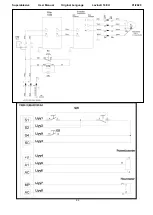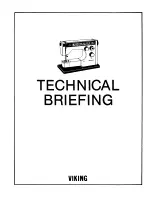
Superabrasive User Manual Original Language Lavina
® 16EU
01/2020
6
1. GENERAL INFORMATION
This owner’s manual is intended for the operator of the Lavina® ELITE machine, the servicing technician as well as for anyone
involved with operating or servicing the machine. We recommend that you read the instructions very carefully and follow
them strictly. The manual includes information about assembling, using, handling, adjusting and maintaining your Lavina®
ELITE floor grinding and polishing machine.
1.1 MANUFACTURER
Superabrasive was founded in 1987, as a manufacturer of high quality diamond tools for the stone and concrete industry.
Today, Superabrasive is one of the world’s leading companies in the production of diamond tools and floor grinding
machinery. At Superabrasive, we strive to deliver the very best solutions to our customers, and enable them to work more
efficiently.
1.2 GENERAL DESCRIPTION
The Lavina®16 ELITE machine is intended for grinding, polishing and buffing concrete, marble, granite, limestone and terrazzo
surfaces with diamond tools. Additionally, the machine could be used for grinding wood floor surfaces.
The Lavina®16 ELITE machine is a three-disc machine, which can be used wet or dry.
The handlebars can be moved and fixed to either side, allowing the operator to follow the edge of a wall comfortably.
It is very light and easy to transport, and thanks to its foldable frame design can be disassembled and loaded in the back of a
compact car or SUV in minutes (fig.1.1), (fig.1.2).
Figure 1.1
For best results, use only tools manufactured or recommended by Superabrasive and its distributors.
The Lavina® ELITE machine is manufactured and fitted for the above-mentioned applications only! Every other
use may possess risks to the persons involved.
1.3 ENVIRONMENTAL CONDITIONS
The temperature range for operating the Lavina® ELITE machine outdoors is between 41°F and 86°F or 5°C and 30°C.
Never use the Lavina® ELITE machine during rain or snow when working outdoors. When working indoors, always
operate the machine in well‐ ventilated areas.
Figure 1.2







































